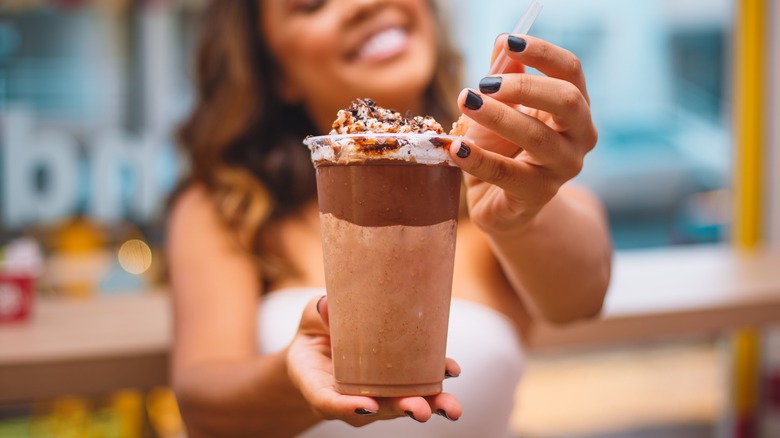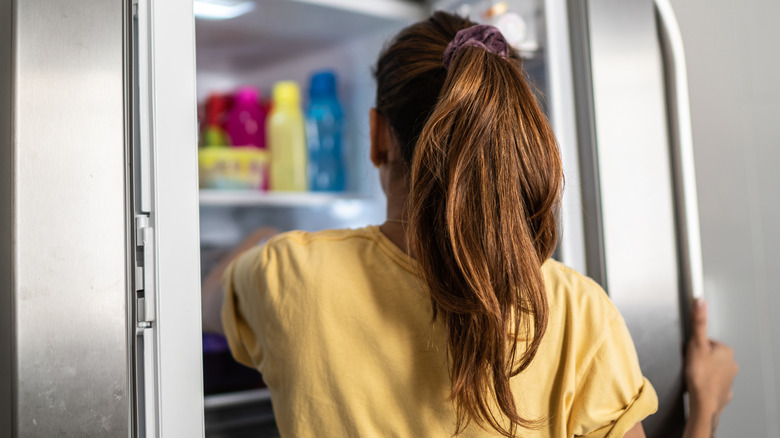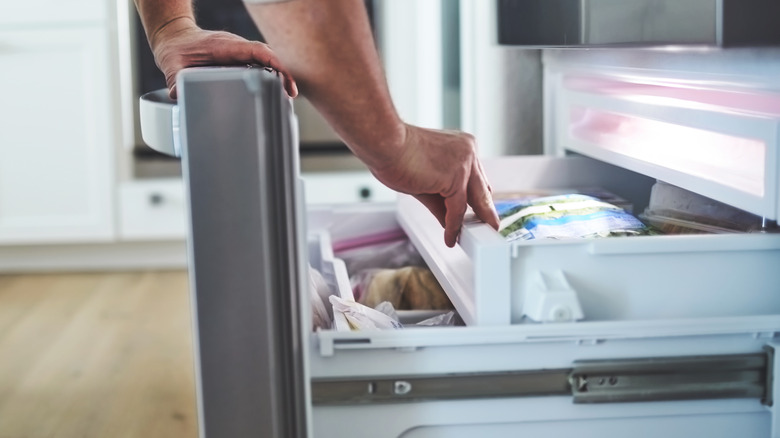How To Save A Milkshake For Later Without Ruining It
If you were writing a list of food that doesn't keep well, milkshakes might be at the top. Too warm, and they melt into liquid. Too cold, and they freeze solid. That magical alchemy of milk and ice cream can't last forever. Or can it?
We're here to tell you that it can be done: You can save a milkshake for later. No cloyingly sweet milk, no blocks of ice — just a creamy treat. The key is preserving that semi-frozen texture, and all it takes is a little effort and creativity. Insulated containers, frozen add-ins, and ice packs can keep a refrigerated milkshake fresh for hours. After longer storage, careful thawing –- and, if necessary, re-blending –- can revive a milkshake that was frozen solid.
Does all that sound like a bit too much work? You can always admit defeat and pour your milkshake into molds for perfectly creamy popsicles. (Defeat can be delicious!) But if that semi-solid, semi-liquid, completely delicious leftover milkshake is what you want, here's how to make it happen.
The short-term solution: Refrigerate smart
If you want to drink your milkshake within a few hours, you can refrigerate it. Just don't stick your to-go cup in the door and expect a flawlessly preserved McFlurry later on. First things first: Decant that milkshake. Chances are, the container it came in, or the lidless cup you poured it into after making it, can't keep ice cream cold for long. A sealable, insulated container, like a Hydro Flask, is designed to keep drinks cold. Even a Mason jar or reusable water bottle is preferable to a flimsy paper cup.
To slow the melting process, you can add more frozen items to your milkshake — this is easy to do during the process of making it at home, but it can be fun to spice up the one you brought back from the drive-thru, too. You could just add ice, but do you really want ice cream with a splash of water? There are more delicious and texturally appealing options to add a little chill to your stored indulgence, like frozen berries, coffee ice cubes, or chilled candy.
Now, you just need to stick your milkshake in the coldest part of your refrigerator. Hint: That's probably the bottom shelf or the very back. Wrap the container in an ice pack if you'd like to keep it extra frosty.
The long-term solution: Freeze and thaw
When you want to drink your milkshake in a few days, the refrigerator won't cut it. You need to use the freezer. But don't even think about just sticking that open cup next to the frozen peas. Just like with the fridge, transfer the milkshake to a new container first — and be even more careful which one you select. Ideally, it will be airtight (air exposure is one of the scientific reasons freezer burn happens) and microwave-safe, with plenty of extra room; milk expands as it freezes. After a few hours in the freezer, your milkshake will have transformed into a chunk of creamy ice. It'll stay that way until you're ready to ... Eat it? Drink it? Both?
Then, it's time to thaw it. The refrigerator is a food-safe, low-effort way to thaw a frozen milkshake. Check every thirty minutes, and maybe give it a stir, to see if it has reached the desired texture. On the other hand, the more impatient among us can try defrosting a frozen milkshake in the microwave. Just use caution: A microwave can take a milkshake from solid to soup in seconds. Use the gentlest, lowest-power defrost setting in short bursts and stir frequently.
If, after thawing, you're not happy with the texture, pour the milkshake into the blender with one more scoop of ice cream and a splash of milk. The fresh ingredients should bring your milkshake back to life.


